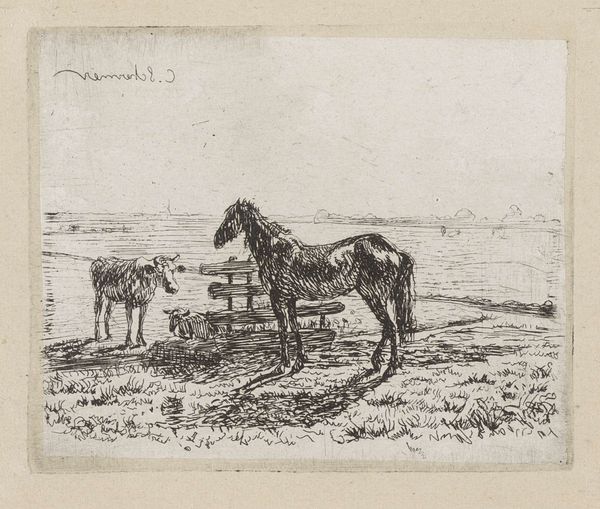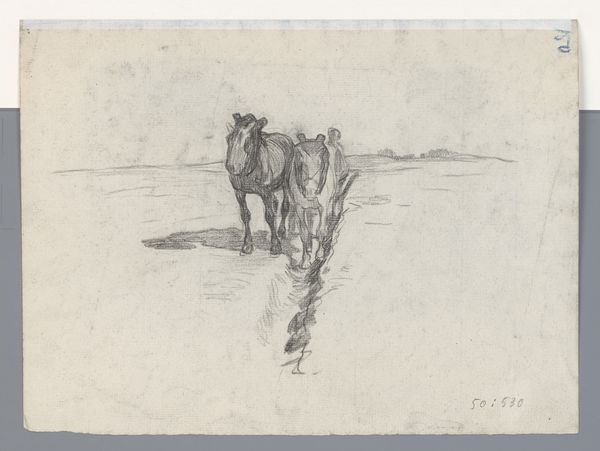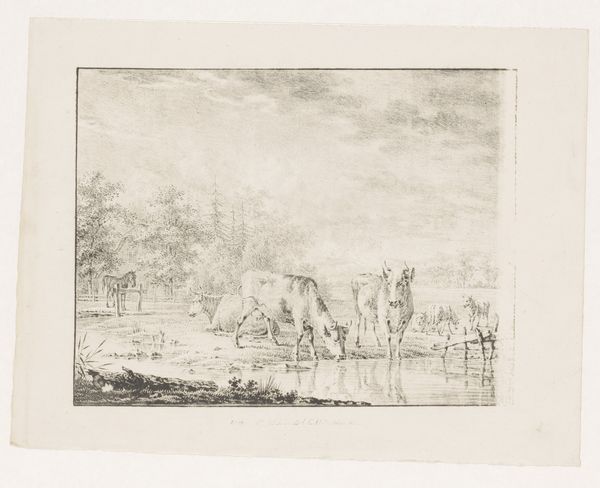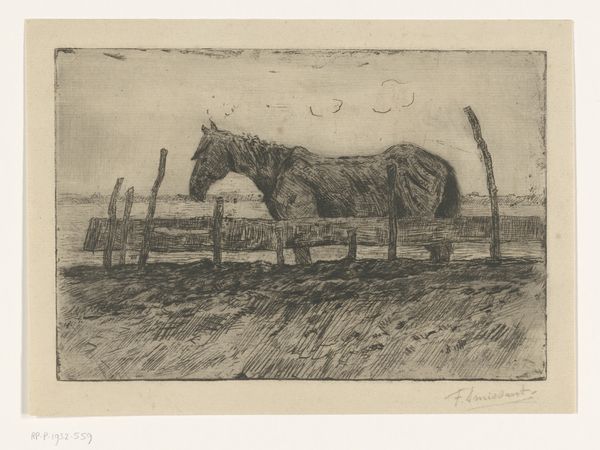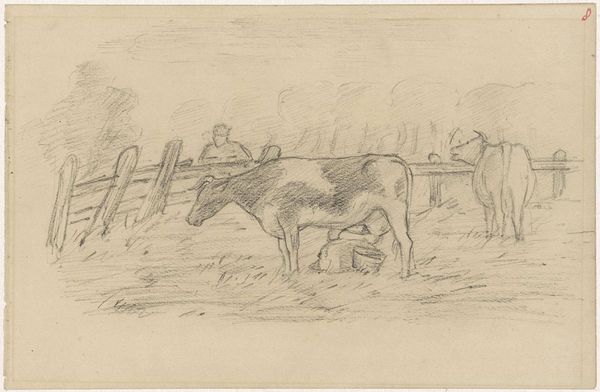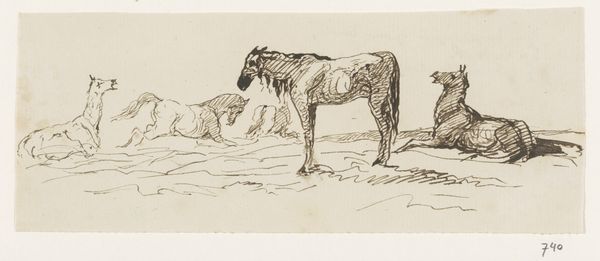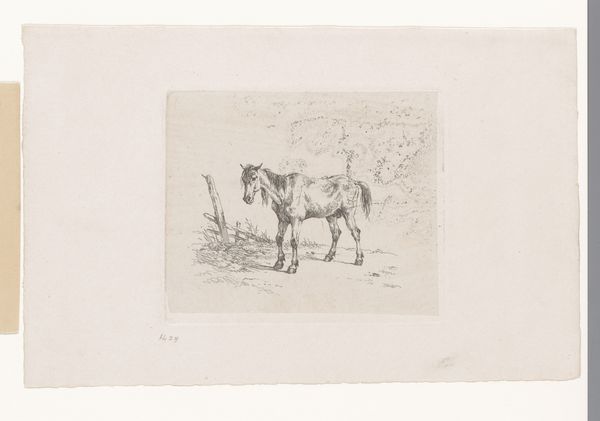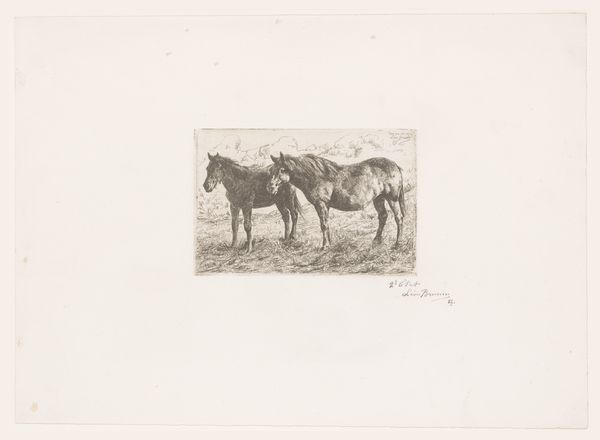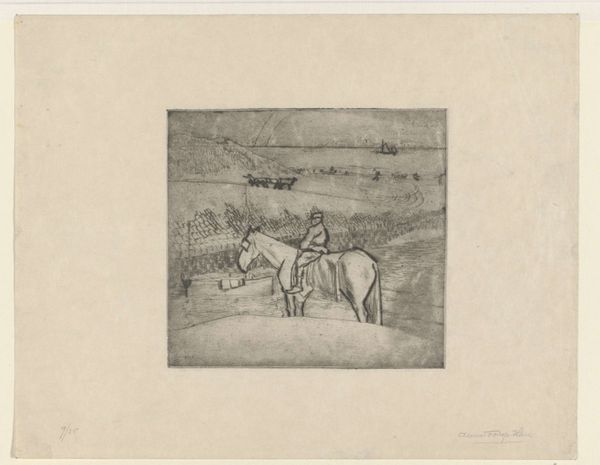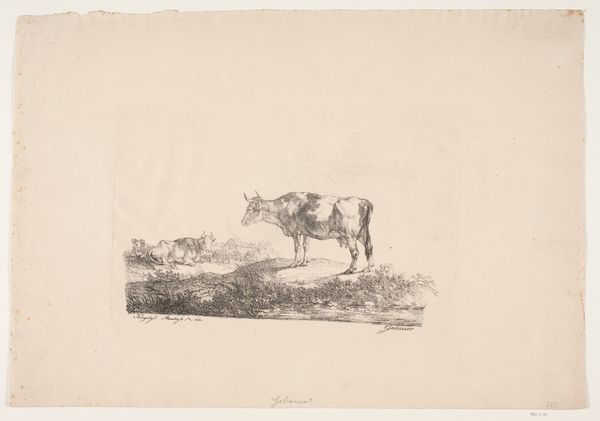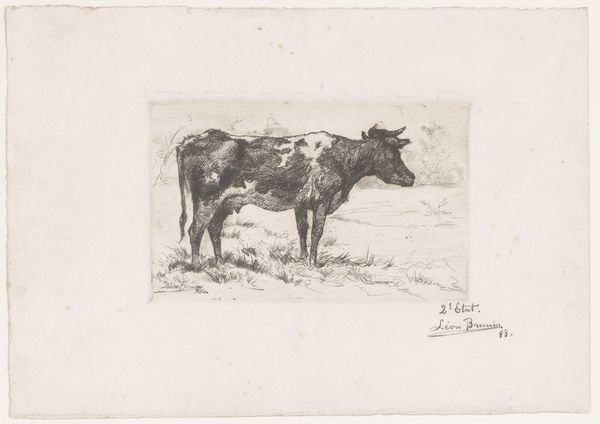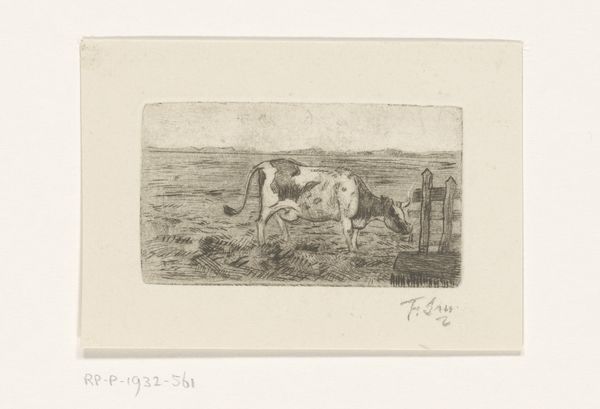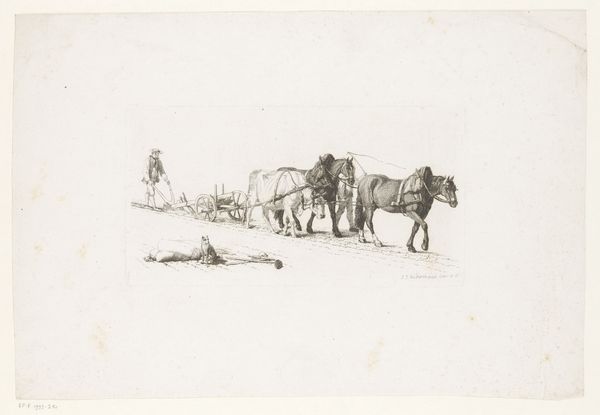
print, etching
#
animal
# print
#
etching
#
landscape
#
horse
#
realism
Dimensions: height 54 mm, width 99 mm
Copyright: Rijks Museum: Open Domain
Herman Johannes van der Weele made this etching of a horse in a meadow, sometime in the late nineteenth or early twentieth century. The image of a solitary horse in a Dutch landscape evokes a sense of rural life and agricultural traditions deeply rooted in Dutch culture. During this period, the Netherlands was undergoing significant social and economic changes, including urbanization and industrialization. Yet, art academies and patrons often supported idyllic images of the countryside. The level of detail is minimal. The horse and landscape are rendered with delicate lines, focusing on capturing the animal's form and the atmosphere of the meadow. What does it mean to elevate mundane rural life? The print could be interpreted as a celebration of the Dutch countryside and its cultural heritage. Art historians can analyze exhibition records, artist biographies, and period writings to explore the work's original context. The meaning of art is always contingent on social and institutional context.
Comments
No comments
Be the first to comment and join the conversation on the ultimate creative platform.
